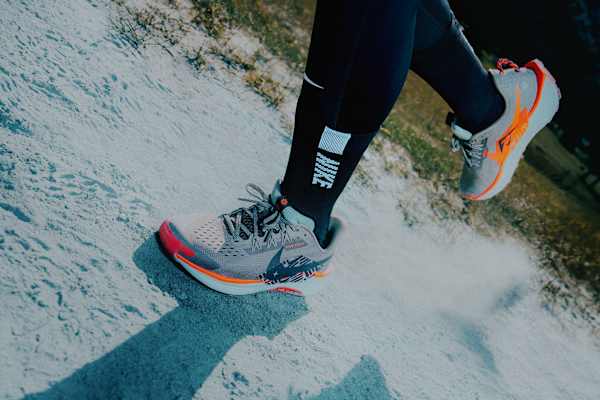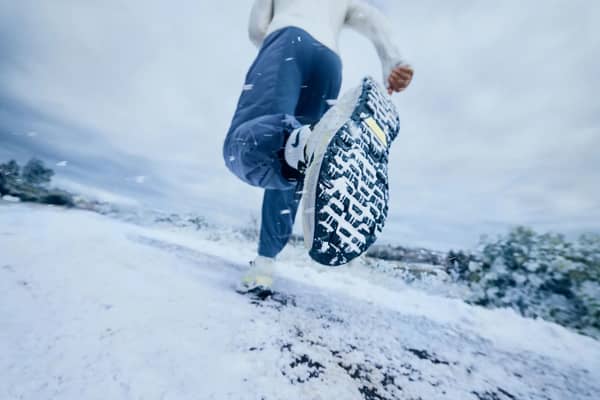Everything You Need To Know Before Running Your First Ultramarathon
Sports & Activity
Running coaches take the guesswork out of preparing for your longest race yet.

For some runners, a marathon offers enough of a challenge. Others, however, may be intrigued by ultramarathons, where races can span hundreds of miles, days, or even a week in some cases.
Read on to learn how to tackle your first ultramarathon.
How Long Is an Ultramarathon?
Whereas marathons cover a set distance (26.2 miles or 42.2 kilometers), ultramarathons come in various lengths, from 50 kilometers (31.1 miles) to 50 miles (80.5 kilometers), to 100 miles (161 kilometers) and up.
“There are also races that are technically endless, and you just have to be the last person standing,” said James Bonnett, a McMillan-certified running coach and ultra marathoner.

How Long Should You Train for an Ultramarathon?
How long you should train for an ultramarathon depends on your current fitness and past running experience, the length of the ultra in question, and how technical the race course is.
A runner who just finished a couch-to-5K program will need more time to prepare than a seasoned marathoner. However, even a seasoned marathoner might need six months or more to train for a 50K that features elevation changes and rocky terrain, said Katie McGee, a three-time Olympic trials marathon qualifier and McMillan-certified running coach.
As a general rule, David Roche, an ultrarunner and coach, and two-time USATF trail national champion, recommended being able to sustain at least 20 to 30 miles per week for six weeks before training for a 50K. That training volume will set you up nicely for the strength and fitness demands needed to train for a 50K, which may make the race distance a lower injury risk, he noted.
However, keep in mind that you may need to adjust your timeline depending on the race terrain. Your best move is to work with a running coach who specializes in ultra marathon training. They can give a more realistic view of what it will take to get ready for the ultra of your choice.

How to Figure Out What Gear You’ll Need for an Ultra Marathon
To get started, look for information about the race course to get a sense of what temperature, terrain, and aid station support to expect. Race reports and photos can help you figure out what gear will come in handy come race day — and what you can do without.
For example, if there are many aid stations along the course, you may be able to carry fewer items with you, Bonnett said. However, it’s a good idea to keep essentials such as medications, water, electrolytes, extra snacks, a whistle, pepper spray, a headlamp with spare batteries, a compass, and a small first aid kit with you.
Temperature and terrain will also determine what features to look for in your gear.

The Top Ultra Marathon Running Gear to Pack for Race Day
Below, McGee and Bonnett share details on what to look for in ultra marathon gear.
Shoes: Check the course terrain to ensure your shoes fit your needs. Races that mostly take place on roads and level trails may call for road running shoes, whereas those that cover wet or technical terrain may require grippy trail running shoes.
From there, choose a shoe that suits your foot anatomy. Visit a specialty running store where you can try on several pairs of shoes and test them out on a treadmill.
Once you find a great pair of shoes, Bonnett recommended buying two pairs to rotate them during training. This way, the foam has time to rebound in between training runs, “so you’re not beating up your body as much,” he explained.
(More: Everything You Need To Start Trail Running)
Hydration Pack: These are belts, vests, and backpacks that allow runners to carry water hands-free. This way, you can replenish fluids without stopping or even slowing down.
Apparel: For temperatures above 55 degrees Fahrenheit, Bonnett suggested wearing lightweight running shorts that feature pockets, a white, moisture-wicking shirt, and moisture-wicking running socks. In climates where the weather significantly cools during the early morning and evening hours, be sure to pack a lightweight jacket that’s rain and windproof. For races in cold conditions, consider tights or running pants. Up top, wear a long-sleeve shirt with a jacket, depending on how frigid the weather, Bonnett said. You can pack any extras in drop bags (most ultras allow these) to be brought to the aid stations by volunteers. That way, you don’t have to carry everything with you. (More on this later.)
Essentials: Other items to consider include anti-chafing products, sunglasses, sunscreen, lip balm, a visor or hat, a watch, a small first-aid kit, snacks and fluids, and ginger chews or tablets for nausea. Also, check if you’ll be running in the dark at any point during the race. If so, you’ll need a headlamp and extra batteries, McGee said. For added safety, consider a whistle, pepper spray, and compass.
How To Train for an Ultra Marathon
Once you’re able to sustain running 20 to 30 miles per week for six weeks, you’re free to start training for a 50K.
Ideally, you’ll run four to six days per week, Roche said. He recommended doing 80 to 90 percent of your runs at an easy, steady pace (you should be able to talk in full sentences), with the other 10 to 20 percent consisting of harder tempos and intervals (you should only be able to say a few words, at most). If you can, perform your steady runs on terrain that mimics what you’ll encounter during the race. This will prepare your body for the specific demands of race day, Roche said.
Progress by adding 10 percent to your easy mileage every week. You can add repetitions, time, or mileage to your more intense workouts, but make sure you can sustain your current volume without difficulty before adding any intensity, Roche said.
Don’t forget strength training. How you incorporate it into your routine is a matter of how much time you have to train and your personal preferences. However, Roche said he prefers daily routines that only take a few minutes. For example, you might perform banded side, front, and back steps before a run. Then, do rear lunges and step-ups directly after a run.

What To Eat for an Ultra Marathon
Before the race. A good pre-race meal is high-carb with moderate protein, said Brittany Wehrle, R.D., C.S.S.D., a board-certified specialist in sports dietetics. Think: a bowl of oatmeal and a protein shake, or an egg-and-cheese sandwich bagel with a fruit smoothie. Just be sure to stick with familiar meals and snacks in the hours and days leading up to your race. “Now is not the time to totally switch up your diet,” Wehrle said.
(Related: What To Eat Before You Run a Race, According to Experts)
During the race. Nutrition needs vary, but in general, aim to consume about 60 grams of carbohydrates per hour when running, Wehrle said. “This can come from gels and chews, sports drinks with carbohydrates, or small snacks like fruits and pretzels, provided you’ve eaten them during training and believe you can tolerate them,” she said.
Hydration is also highly individual and will depend partly on temperature. But as a general rule, aim for 24 to 32 ounces of fluid per hour, with most of that amount containing electrolytes, Wehrle said. Be sure to test your fueling strategy during your training runs so you know what, when, and how much to eat and drink during the race itself.
Common Ultramarathon Pitfalls To Avoid
- Eating the wrong foods: Stomach issues are common in running events — especially ultras. “There is nothing worse in my opinion than an upset stomach,” McGee said. At best, it makes the race uncomfortable. At worst, you have to drop out because you can’t keep food down, McGee said. To lower your odds of stomach issues, practice using specific foods to refuel during your training runs. Experiment until you find an approach that keeps you comfortable for the long haul. Then, use that approach on race day. However, don’t be afraid to pivot if your fueling plan doesn’t work out during the race.
- Pacing: While pacing is something you can practice during training, it’s still easy to get caught up in the excitement of the race and start with a strong pace, Bonnett said. But this increases your odds of stalling long before you reach the finish line. “I always tell people, an ultra is like a volume dial on a radio,” Bonnett said. “You want to start at zero and slowly crank it up.” He said he advises runners to begin with a pace that feels way too slow — you’ll be glad you pulled back the reins when you’re passing other runners later in the race.
Support crew: Most ultras allow you to bring drop bags filled with food and gear, which are then brought to the aid stations by volunteers for you to pick up during the race. You can also bring a support crew whose responsibility it is to transport your drop bags to designated aid stations. This way, you don’t have to carry all your race supplies on you. However, Bonnett cautions against solely relying on your support crew or volunteers. “I have had many times where my crew got lost or had a flat tire, so I always bring a drop bag as a backup,” he said.
Words by Lauren Bedosky





